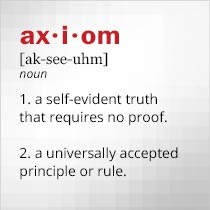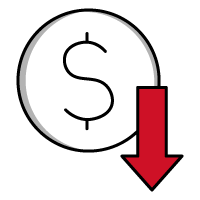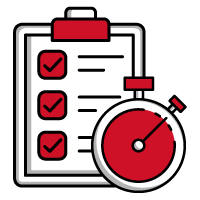Teaming Amplifiers and Signal Generators
October 04, 2022
.jpg) |
Signal generators serve as sources of analog, digital, and even RF/microwave signals for test purposes. They may not always deliver enough output power for some tests, such as characterizing filters and antennas, and help may be needed. By connecting a suitable amplifier, a signal generator can be boosted to the power levels needed. Finding the right combination comes down to knowing the key specifications for both units.
Laboratory amplifiers can be specified by frequency range, bandwidth, output power, and gain or input power required to reach the rated output power. Amplifiers may be suited for a variety of signal types including pulsed signals and with different forms of modulation, such as amplitude modulation (AM) and frequency modulation (FM). Understanding the measurement requirements for the signals applied to a device under test (DUT), such as phase noise, harmonics, and spurious levels can help establish minimum requirements for a test signal generator as well as the amplifier that will boost it.
To minimize noise, an amplifier and signal generator should be impedance matched. Most high-frequency test equipment is designed at an impedance of 50 ?, although some equipment for video testing may be at 75 ?. Interconnections are usually by means of coaxial connectors with Type N connectors, for example, operating to about 10 GHz and 100 W. They are available in 50- and 75-? versions and used in both amplifiers and signal generators, with SMA and other connector types serving higher frequencies.
Coaxial cables between test amplifiers and signal generators should not be overlooked. Test cables are usually rated according to attenuation per 100 feet of cable and a pair of connectors will add some loss to a cable assembly. Power levels from the signal generator to the amplifier will be a fraction of a watt while from the test amplifier to the DUT may be 100 W or more depending upon waveform and frequency, so well impedance matched cable assembles can help optimize the transfer of power when teaming a test amplifier and signal generator.
A compatible signal generator must provide sufficient input power to drive a test amplifier to its rated output-power levels with minimum noise and distortion. The output of a signal generator may be adjustable over a certain power range by means of a manual control on the unit or remote computer control, such as GPIB or RS-232. A supporting test amplifier may have an input sensitivity range that can be adjusted for optimum match with the signal generator. The type of testing performed on the DUT will determine the signal power levels required, with the highest power levels typically possible for the shortest pulses, as in radar component and system testing.
Exploring Examples
High power testing is often performed across wide frequency ranges, requiring broadband test equipment. Audio equipment has long been evaluated with test signals at hundreds and even thousands of watts of power, with the switch from audio, through VHF and UHF signals to what is considered the start of the RF through microwave realm occurring at about 100 kHz. Some test amplifiers can support boosting signals across both regions, such as the solid-state Amplifier Research 100A250A, which covers 10 kHz to 250 MHz. When fed with only 1 mW (0 dBm) input power from a signal generator, it provides 100 W (+50 dBm) output power (50-dB gain) adjustable over an 18-dB range. With ±1.5-dB gain flatness, the amplifier is ideal for wideband swept-frequency measurements. It stays cool at the highest levels, thanks to built-in fans and forced-air cooling. Input and output ports are equipped with Type N female coaxial connectors and the amplifier includes IEEE-488 (GPIB) and RS-232 interfaces for computer remote control.
For higher frequencies, the OPHIR 5060 amplifier enables testing from 800 MHz to 4.2 GHz. It handles input signals as high as +10 dBm and provides at least 45-dB gain with ±2-dB gain flatness. The amplifier delivers moderate output power with high linearity and much higher output power when such linearity is not required. With 1-dB compression, the output power is typically 20 W. But when output power can vary within a 3-dB window, the amplifier can deliver almost 200 W (+53 dBm) output power. It includes Type N input and output connectors and is quite safe for any test bench, with built-in over-current, over-voltage, and thermal overload protection.
For even higher-frequencies, the IFI Instruments T184-25, provides as much as 25 W output power from 4 to 18 GHz, with CW, AM, FM, and pulsed signals. It has an output stage based on traveling-wave-tube (TWT) electron devices capable of 44-dB signal gain across the wide bandwidth. For good long-term reliability, the TWTs are driven by a solid-state power supply at 100 to 120 VAC, or 200 to 240 VAC. Thermal management of the tubes is maintained by built-in fans and forced-air cooling. The rack-mount amplifier features a backlit liquid-crystal-display (LCD) screen for ease of monitoring performance and RS-232 and GPIB interfaces for remote control.
Amplifiers using TWTs as active devices are capable of very high pulsed output power levels, such as the Applied Systems Engineering 176X/KU, which is available for octave and multioctave frequency coverage from 1 to 18 GHz. It can achieve output power levels to 1 kW for pulses from 0.07 to 100 μs wide at 6% duty cycles and pulse repetition frequencies to 400 kHz. The tradeoff is an amplifier weighing 130 lbs., although with very low phase noise to preserve the phase characteristics of the pulses it amplifies.
Signal generators working with these amplifiers should provide sufficient power to drive the amplifiers to power levels required for testing a DUT. For example the Keysight 33250A, is a versatile, function and arbitrary waveform generator (AWG) based on direct-digital-synthesis (DDS) technology. I can generate sinewaves and square waves as fast as 80 MHz with 1 μHz frequency resolution and 12-b vertical resolution for creating pulses, modulated test signals, and other waveforms as needed. It provides as much as 10 V peak-to-peak output into a 50-? load.
Few signal sources can match the versatility of the Tektronix AWG70002A which can generate radar signals, optical signals, high-speed-digital (HSD), and signals with complex modulation at frequencies through 10 GHz. Signals that can be simulated on a computer program can be generated with the model AWG700002A with 10-b vertical resolution and played with typical output power levels of -8 through -2 dBm. Output signals are available at a universal coaxial connector system with SMA female adapter.
In the microwave frequency range, the Rohde & Schwarz R&S SMA100B from tunes from 8 kHz to 20 GHz with a combination of high output power and low noise. It typically reaches +30 dBm (1 W) or more output power to 18 GHz and +28 dBm or more to 20 GHz. The wideband noise I negligible, at -160 dBc, while harmonic levels are -63 dBc and nonharmonic noise levels are -63 dBc. For any testing where phase noise is critical, this signal generator is a prime candidate, with single-sideband (SSB) phase noise of -83 dBc/Hz close to the carrier (offset 10 Hz from 20 GHz), dropping to -120 dBc/Hz further from the carrier (offset 20 kHz from 10 GHz).
For high-frequency testing, the Anritsu MG3695B RF/microwave signal generator features a frequency range of 2 to 50 GHz with low spurious and phase-noise levels. It can perform swept-frequency testing in steps as fine as 0.01 Hz and sweep times ranging from 30 ms to 99 s. When feeding an amplifier for higher levels, the model MG3695B delivers signal power levels as high as +10 dBm to 20 GHz and as high as +3 dBm to 50 GHz by means of a coaxial female V connector.
For any help in selecting the right assortment of units, please contact the Axiom Test Equipment’s sales department at sales@axiomtest.com, or by calling an Axiom sales representative at 760-806-6600.
Back to BLOG








